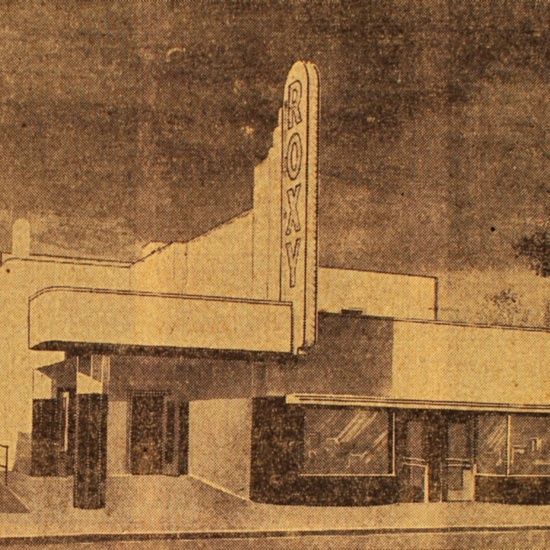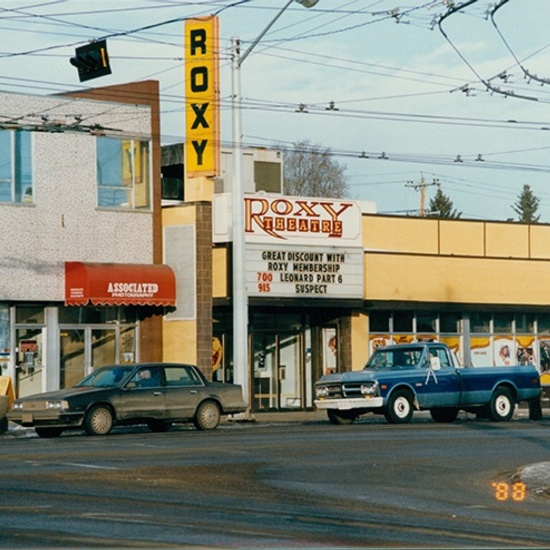Roxy Theatre
When it opened in 1938 the Roxy was the only theatre in the city west of 104 Street.
When it opened in 1938 the Roxy was the only theatre in the city west of 104 Street.
Located on 124th Street and 107 Avenue and designed by prominent local architect William G. Blakey, the Roxy was a good example of the Moderne style in Edmonton-particularly its incorporation of white stucco and black polished stone cladding, rounded corners, the prominent stepped marquee, and long narrow coping. Its design was given glowing reviews by the Edmonton Bulletin which wrote "Smartly modern in design, eith eye catching neon sign, white stucco with black trim and gleaming, well-lighted foyer, fully air-conditioned, seats arranged to assure positive screen vision and built for comfort upholstery and adequate rest room facilities, the Roxy is truly the up-to-the-minute expression of customer service in theatre construction." The public seemed to agree. The opening reception was attended by many prominent Edmontonians, including Mayor John Wesley Fry and Lieutenant Governor John C. Bowen.
The Roxy was built with a recessed entry to the theatre on the left, allowing the majority of the front façade to be used as commercial space. One of the first tenants was Merrick Drug Store, which offered one of the first soda fountains in the are, guaranteeing it lots of business from the neighbourhood youth. The theatre underwent a major renovation in the 1970s. The entrance was moved to the street front, and the commercial space was removed to make way for an expanded lobby and concession. Most of the Moderne elements disappeared during this renovation through the removal of the rounded corners, black tile, and iconic marquee, and the alteration of the stucco and coping.
The Roxy Theatre was the brainchild of Bill Wilson, the son of long-time Capitol Theatre manager Walter Wilson. After Bill lost his government job during the Depression, he fell back to the family business, and with the help of investors, built the Roxy Theatre. Bill left in 1941 to manage the Garneau Theatre, and the Roxy was taken over by Odeon (Suburban) Theatres, who operated it until the 1980s. the Roxy continued as a theatre until finally closing in 1988. The following year it was purchased by the Theatre Network and was transformed into a live performance space. By eliminating some of the seating, adding dressing rooms, and extending the stage and lobby, the Roxy found a new niche within Edmonton. The Roxy thrived in this new role until January 2015 when the much-loved theatre was destroyed by fire.
Details
Type
Social and Recreational
Designation Status
No Historic Recognition
Neighbourhood
Time Period
Year Built
1938
Architects
Architectural Styles
Character Defining Elements
Coping , Flat roof , One storey , Polished stone , Portico , Stucco cladding


